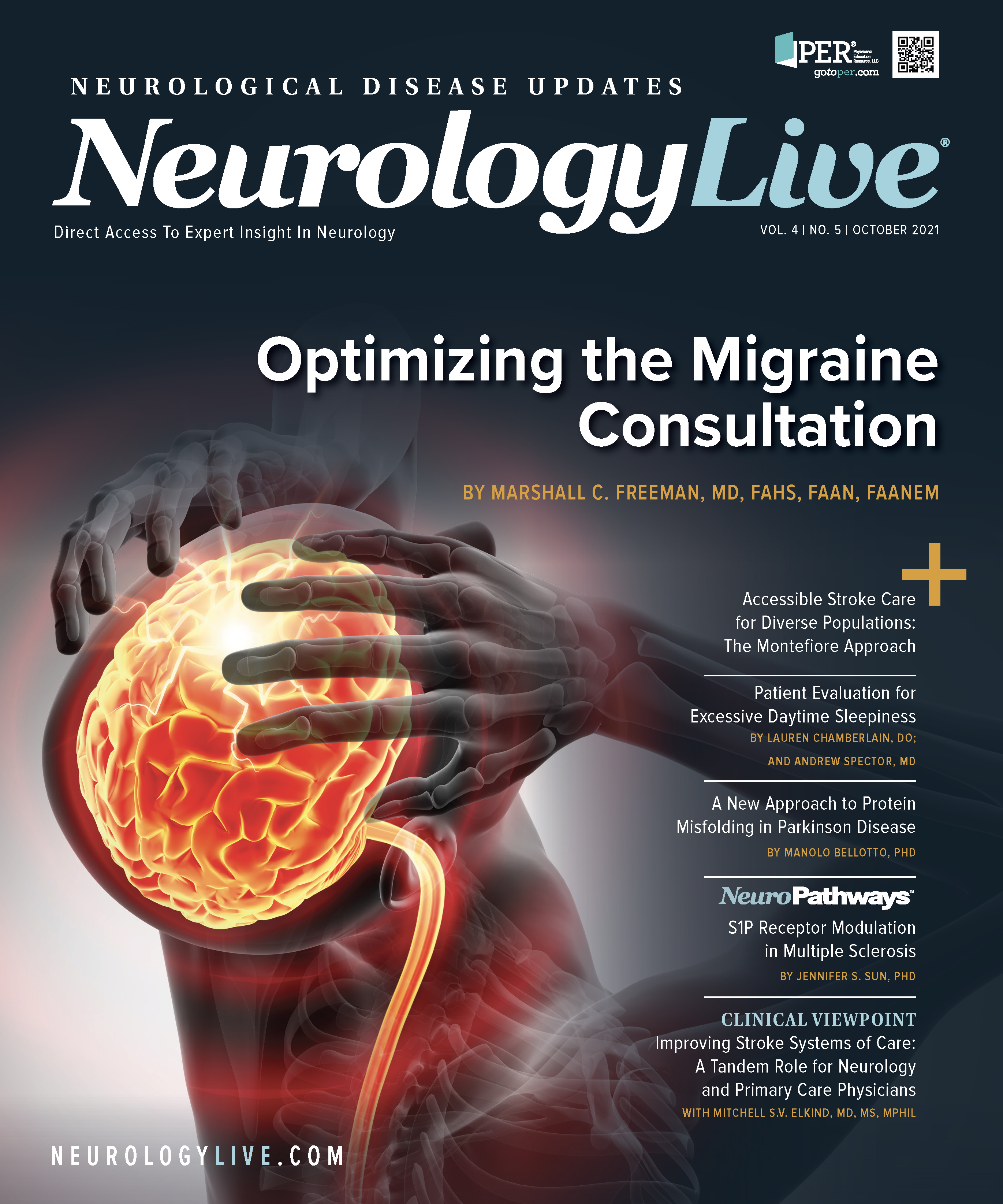The Therapeutic Space for People Living With Headache After COVID-19 Infection
Although headache and COVID-19 have been linked together in the literature, more studies are needed to better understand the pathophysiology of these headaches and to determine the best treatment options.
Nina Riggins, MD, PhD, FAAN, FAHS

HEADACHES DURING AND AFTER COVID-19 infection occurs very frequently, and more studies are needed to better understand the pathophysiology of these headaches and to determine the best treatment options during the period of long COVID-19 syndrome.
All clinicians who seek to “connect the dots” for the right diagnosis and the proper treatment of complex medical issues are recognizing the importance of carefully listening to the patient. A thorough medical history and physical examination provide critical information to neurologists, information that cannot be obtained simply by using modern technology. Collecting excellent history helps us to create an individualized treatment plan based on evidence-based medicine. As neurologists, we study the brain and believe in the powers of the brain. And despite the pandemic, a surge of important new research is emerging, as are new therapeutic developments in our field of medicine.
I am a headache neurologist, and I have found that many patients report “migraine-like” headache, “tension-like” headache, and “trigeminal autonomic cephalalgia–like” headache in different time frames after they have tested positive for COVID-19.
In the International Classification of Headache Disorders, Third Edition (ICHD-3), there is a definition for “headache attributed to systemic viral infection.”1 There is also the possibility that the cytokine storm–induced inflammation that occurs in many COVID-19 infections could be viewed in the ICHD-3 classifications as “headache attributed to other noninfectious inflammatory intracranial disease.”1 As the neurological impairments frequently seen in post–COVID-19 patients can have different pathophysiological bases— ranging from direct neurotoxicity to the consequences of hypoxia, hypertension, coagulopathy, and inflammation— multiple physiological factors might be leading to headache during and after the infectious period.2
Headache appears to be a heterogenous entity in the setting of COVID19. Publications vary in their documentation of the percentage of people who report headache during acute COVID-19 infection, with numbers ranging from 14% to 60%, and these numbers might represent an underreporting of headache.2
In addition to headache, patients with COVID-19 infections can have other neurologic manifestations. These can be both central nervous system–related (eg, dizziness, cerebrovascular disease, seizure, altered consciousness) or peripheral nervous system–related (eg, neuropathic pain). Skeletal muscular injury has also been reported.3
Headache can be one of the prominent symptoms of COVID-19 infection. Results of some studies indicate that it is the most frequent first symptom of COVID-19. In 1 published report, headache persisted after 1 month in 13% of patients.4 In another study, one-third of followed-up patients had persistent disabling daily headache after 6 weeks, with poor response to acute treatment, and in more than 30% of patients, headache represented the only residual symptom following COVID-19 infection.5
In short, a population of patients who have been infected with the virus suffer daily headache without any other symptoms. They may represent a group of new daily persistent headache patients who present at a neurology clinic weeks or even months after their bout with COVID-19, and only with a thorough medical history can it be determined that onset of headache was indeed in a setting of COVID-19 infection.
It has been widely reported that a common symptom of COVID-19 infection is loss of the sense of smell, and a number of studies have examined the possible mechanism for this anosmia. The receptor for the virus, angiotensin converting enzyme-2, is present in the endothelium of blood vessels, including small vessels of the cerebral circulation and the meningeal endothelium.5 Some data suggest that patients with COVID-19 and headache vs those without headache are more likely to have anosmia.6
One reason for loss of smell could be COVID-19–induced olfactory epithelial cell damage. Brain imaging in a patient with COVID-19 and anosmia demonstrated hyperintensity in the gyrus rectus and olfactory bulb areas of the brain.7 Following viral infection, an inflammatory response in the mucosa of the nose may be likely to occur. Also, activated trigeminal afferents would release calcitonin gene-related peptide. COVID-19 has been shown to activate the trigeminovascular system, and if sensitization of the trigeminovascular system continues, it can lead to persistent headache long after the first positive COVID-19 test.6 Thus, taken together, all these actions could lead to both headache and suppression of olfactory functions.
We are just beginning to get a better understanding of long COVID syndrome. For example, it has been reported that COVID-19 disease severity might not be a good predictor of the onset of long COVID syndrome. Recognized symptoms of long COVID include fatigue and dyspnea, sleep changes, gastrointestinal (GI) symptoms, and dysautonomia; these can last for months after an acute COVID infection. Other persistent symptoms may include cognitive changes, generalized pain, and cardiac issues.
Among the reported risk factors for long COVID are being female and displaying several specific early symptoms during COVID-19 infection.8 In addition, some evidence indicates that early dyspnea, prior psychiatric disorders, and specific biomarkers (eg, D-dimer, C-reactive protein, and lymphocyte count) put a patient at greater risk for developing long COVID.8 The gut-brain axis change has also been implicated as a potential contributor to the development of long COVID. Persistent gut dysbiosis brought on by COVID-19 infection could negatively modulate neurotransmitter circuitries in both the gut and the brain, and it may contribute to the neurologic symptoms of long COVID.8 This is another excellent example of how neurologists working as team members—in this case, with GI specialists and primary care clinicians—can provide the most helpful care to sufferers of long COVID.
For patients who have been hospitalized with COVID-19 infections, the risk of experiencing residual symptoms can be high. Results of 1 study noted that the median proportion of individuals previously hospitalized with COVID-19 who were experiencing at least 1 persistent symptom after discharge was 72.5%.9
Despite an abundance of literature and observations on the presence of headache after COVID-19 infection, not many results about evidence-based treatments have been published on long-COVID headache so far. Some case studies described the use of candesartan, amitriptyline, and onabotulinumtoxinA, which were noted as helpful for some, but not all, patients with long-COVID headache.5
Also, some study results indicate that special considerations should be given to people who become infected and who previously presented with migraine. It has been noted that persistent changes in migraine characteristics can occur despite COVID-19 resolution.5
The phenotype of headache and comorbidities should be taken into consideration while discussing the pharmacologic treatment for headache after COVID-19 infection. Lifestyle modifications and behavioral therapy should be discussed. Certain procedures that might be helpful include onabotulinumtoxinA injections and nerve blocks. In addition, a trial of neuromodulatory devices could be done. A multidisciplinary team approach is preferred, and advocacy should be in every patient treatment plan. With caregivers and patients working together, we will discover the best way forward.
REFERENCES
1. Headache Classification Committee of the International Headache Society (IHS) The International Classification of Headache Disorders, 3rd edition. Cephalalgia. 2018;38(1):1-211. doi:10.1177/0333102417738202
2. Martelletti P, Bentivegna E, Spuntarelli V, Luciani M. Long-COVID headache. Published online May 20, 2021. SN Compr Clin Med. doi:10.1007/s42399-021-00964-7
3. Bobker SM, Robbins MS. COVID-19 and headache: a primer for trainees. Headache. 2020;60(8):1806-1811. doi:10.1111/head.13884
4. García-Azorín D, Sierra Á, Trigo J, et al. Frequency and phenotype of headache in Covid-19: a study of 2194 patients. Sci Rep. 2021;11(1):14674. doi:10.1038/s41598-021-94220-6
5. Caronna E, Ballvé A, Llauradó A, et al. Headache: a striking prodromal and persistent symptom, predictive of COVID-19 clinical evolution. Cephalalgia. 2020;40(13):1410-1421. doi:10.1177/0333102420965157
6. Messlinger K, Neuhuber W, May A. Activation of the trigeminal system as a likely target of SARS-CoV-2 may contribute to anosmia in COVID-19. Published online August 18, 2021. Cephalalgia. doi:10.1177/03331024211036665
7. Toptan T, Aktan Ç, Başari A, Bolay H. Case series of headache characteristics in COVID-19: headache can be an isolated symptom. Headache. 2020;60(8):1788-1792. doi:10.1111/head.13940
8. Yong SJ. Long COVID or post-COVID-19 syndrome: putative pathophysiology, risk factors, and treatments. Infect Dis (Lond). 2021;53(10):737-754. doi:10.1080/23744235.2021.1924397
9. Nasserie T, Hittle M, Goodman SN. Assessment of the frequency and variety of persistent symptoms among patients with COVID-19: a systematic review. JAMA Netw Open. 2021;4(5):e2111417. doi:10.1001/jamanetworkopen.2021.11417
